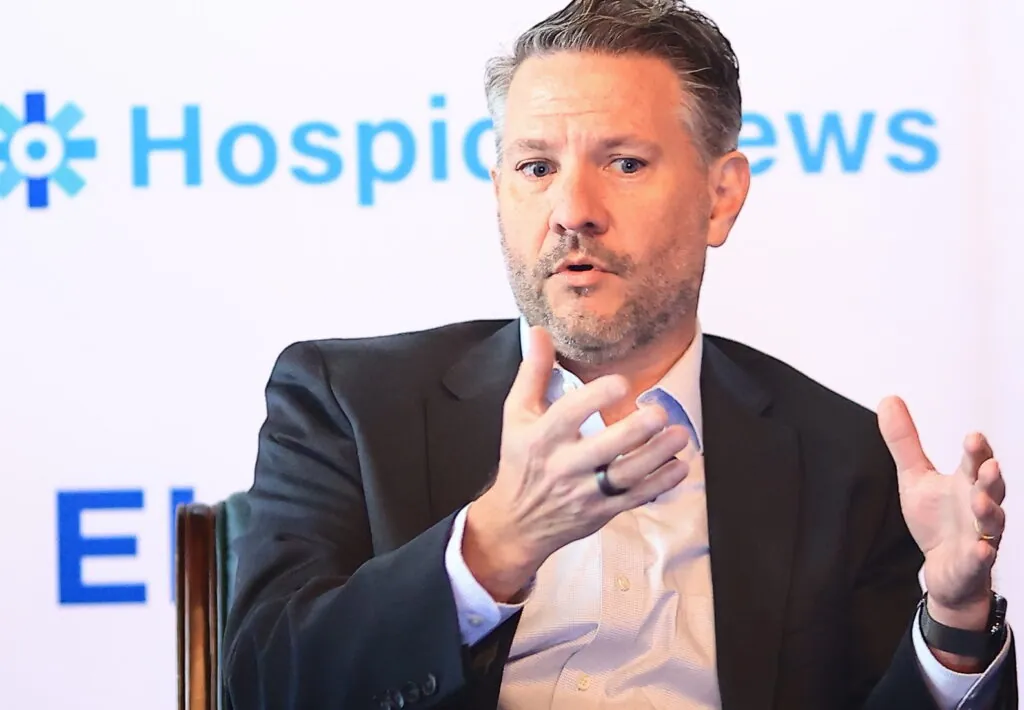The recently released independent feature film, “Suncoast,” tells the story of a teenage girl and her mother wrestling with the approaching death of their sibling and son, respectively. The film is based on director Laura Chinn’s personal experience as her brother Max received inpatient care at the Suncoast Hospice Care Center, an actual facility operated by the Florida-based nonprofit Empath Health.
In the midst of this personal tragedy, a public debate unfolds. During the time that Chinn’s family was receiving care at Suncoast, the hospice was also caring for Terry Schiavo, whose story captivated much of the nation in 2005.
The film provides a window into what hospices actually do, as well as the experience of families whose loved ones are nearing end of life, the challenges of caregiving and grief that often begins long before the patient dies, according to Jonathan Fleece, CEO of Empath Health.
“I think the movie just does a phenomenal job of just putting the audience and the viewers into those kinds of dynamics, to not try to explain hospice care and all what goes into hospice care, but to try to help people feel it,” Fleece told Hospice News. “That’s a very hard thing to do and a sensitive thing to do.”

In the film, actor Nico Parker portrays high-schooler Doris, who has largely been responsible for her brother’s caregiving while her mother Kristine, played by Laura Linney, works to keep food on the table. The toll that caregiving has taken on both family members, and their relationship, is a major theme of the film, as is Doris’ desire to find ways to live her own life even as her brother’s ends.
In the backdrop of these personal events, hangs the Schiavo case. The decision by Schiavo’s husband to suspend artificial life support and feeding for his wife, who was in an irreversible persistent vegetative state, prompted a seven-year legal battle with her parents.
The legal dispute sparked protests and the involvement of high-profile politicians, including then President George W. Bush. For much of this time, the Suncoast facility was surrounded by protesters demanding that Schiavo continue to receive life-sustaining care, as clinicians, families and local authorities contended with large crowds and multiple threats of violence, according to media reports.
In one scene, Linney’s character Kristine pleads with a police officer to let her spend the night with her son in the facility, only to be denied access due to a bomb threat.
Though the public spectacle around the Schiavo family’s experience was unique, it reflects many of the realities that many families of terminally ill patients have to face, according to Fleece.
“The Terry Schaivo story is not ours to tell, but many of those components affect end-of-life care every day. Families are not always in agreement with what’s the best plan of care. Oftentimes, there are families that have not focused as much on advanced directives and making sure that their intentions are known and documented,” Fleece said. “We often have to deal with those kinds of components in what we do, and it’s a tremendous reflection on our colleagues,and how competently skillful and empathetic they are in helping patients and families navigate that journey.”
A subplot in the movie shows a budding friendship between Doris and Paul, portrayed by Woody Harrelson, who posted himself outside the Suncoast facility in protest of the Schiavo case while grieving for his own wife. Their conversations delve into the experience of losing a loved one and the different ways survivors can process their grief.
“Suncoast” was produced by Searchlight Pictures, Freestyle Picture Company and Seven Deuce Entertainment. The film premiered in January at the Sundance Film Festival and released to theaters on Feb. 2. The film is available for streaming via Hulu as of Feb. 9.
The building in which Schiavo and Max Chinn received care has since been renovated and converted into an Empath Health PACE facility, though Suncoast Hospice and its affiliates continue to offer inpatient care at other sites.
The way the center is presented in the film is a good representation of what hospice inpatient care looked like in 2005 and calls attention to the ways it has since evolved, according to Fleece.
“The environment in the movie from a care center perspective was exactly what you would expect to see in 2004-2005. Fast forward to today, we have fireplaces in our care centers; some of them have aquariums. We have family gathering places. We have sleeper sofas, kitchens that they can use,” Fleece said. “I think that’s part of the beauty of the story. It’s showing how far so much of society has evolved and advanced in those 20 years, including hospice and end-of-life care.”
Companies featured in this article:
Empath Health, Freestyle Picture Company, Searchlight Pictures, Seven Deuce Entertainment, Suncoast Hospice



